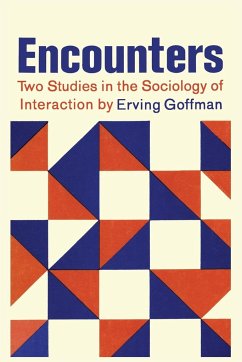
Two in the Bush
Versandkostenfrei!
Versandfertig in 1-2 Wochen
22,99 €
inkl. MwSt.

PAYBACK Punkte
11 °P sammeln!
Two in the Bush is the true account of a young Indiana couple who, in 1946, built and lived in the remote wilderness in the northern part of the Province of Ontario. John and Ruth Moore were both children of businessmen and had always lived in cities. With the help of an architect, John designed the house which featured passive solar and wood heat. John, John's father and Ruth enlisted the occasional assistance of friends and hired teenagers. Together they moved 40 tons of building materials from the station at the railroad hamlet of Missanabie to nearby Dog Lake, into boats and down the lake ...
Two in the Bush is the true account of a young Indiana couple who, in 1946, built and lived in the remote wilderness in the northern part of the Province of Ontario. John and Ruth Moore were both children of businessmen and had always lived in cities. With the help of an architect, John designed the house which featured passive solar and wood heat. John, John's father and Ruth enlisted the occasional assistance of friends and hired teenagers. Together they moved 40 tons of building materials from the station at the railroad hamlet of Missanabie to nearby Dog Lake, into boats and down the lake to the site they had chosen for their home. The three of them dug the hole, laid the foundation, cut every board and drove every nail. John did all the wiring and plumbing. The Moores ended up with a house with pressurized hot water and a seven foot, 180 degree bay window. The solar and wood heat kept them comfortable all during the winters when temperatures could drop to as low as minus 50 degrees Fahrenheit. All the other residents of the area lived in dark cabins with hand pumps, kerosene lanterns and out-houses. The family lived on Dog Lake for three years and seven additional summers. Much of their food came from a large vegetable garden and fish they caught in the lake. Three children came along and they grew strong in the lakeside wilderness. Mail was received only when they went to Missanabie, the closest town - once a week in summer and far less frequently in winter. They had no telephone and, other than mail, their only contact with the outside world was commercial radio. The railroad was the transportation and communication link with the rest of Ontario. The Moores were often given rides by railway employees on both freight trains and hand cars. Neighbors were far away and some were only there in the summers. Ruth spent six months one winter without seeing another human being besides John and their infant. At times forest fires threatened, a bear claimed their garbage dump and a thief stole food that was being saved for a special occasion. Boy Scouts dropped in after dark one day with no idea where they would spend the night. Weather changes threatened boaters who couldn't make it home safely.












